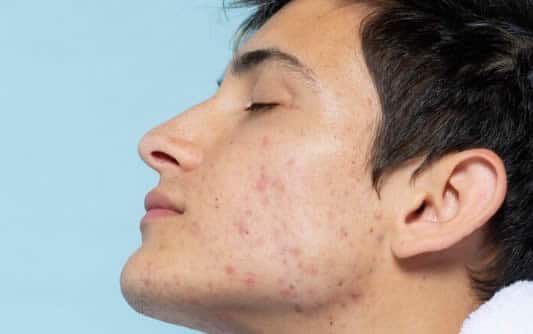
There are many misconceptions about acne floating around the internet. You’ve heard plenty of stories about what causes acne, but how do you know if it’s true? We’re here to clear things up starting with debunking the top 12 acne myths.
- Only teens get acne. Acne is the most common skin disease. People of all races and ages get acne. 30% of adults, both men and women, experience acne. Although 85% of teens get some form of acne, they aren’t the only ones who can suffer from it.
- You need to wash your face more. Washing your face more often won’t cure your acne. Try to wash your face twice a day, but more than twice daily may do more harm than good. Washing your face is helpful to decrease the bacteria, but you shouldn’t overdo it.
- It’s OK to pop your pimples safely. This is never a good idea. Squeezing your pimples triggers inflammatory responses and can introduce even more bacteria to your zit. It also can cause acne scars which don’t go away.
- The sun and tanning beds clear up acne. Although it may feel like it’s drying your skin, the sun is not helpful in healing acne. The sun can inflame and dry your skin which causes your skin to produce more oil, ultimately making it worse.
- Toothpaste can clear a pimple. Toothpaste and other household items are not safe on your skin. The fluorides in toothpaste can even worsen acne. Opt for a spot treatment instead that contains salicylic acid. Your skin will thank you in the long run.
- Pores open and close. Unfortunately, this isn’t the case. Since pores don’t have muscles, they can’t open and close. Steam can loosen the oils built up in pores and once clear, they can appear smaller.
- Dirty skin causes acne. Acne isn’t caused by uncleanliness. Washing your face twice a day is more than enough to remove bacteria and surface oil.
- Greasy food causes acne. Chocolate, french fries and other junk food have little to no effect on acne. There is no scientific evidence that these foods cause acne, so indulge all you want!
- Exfoliate as much as possible. Scrubbing your face really hard doesn’t just wash acne away. If you end up scrubbing too hard, it can inflame your acne, making it even worse.
- Acne only affects people with oily skin. People with all different skin types suffer from acne. All skin types can develop whiteheads, blackheads, and pimples.
- Makeup causes acne. Makeup can only irritate your skin if you’re using the wrong products. Foundations that are oil-free and lightweight won’t cause any issues, unless you forget to remove them at night. Don’t forget to wash your face before bed to remove any makeup and oil.
- Acne will go away, so you don’t need to treat it. Acne is chronic, meaning it can last a long time. It’s a condition which means it exists on your skin beneath the surface. You should always be concerned with managing your acne, and we can help.
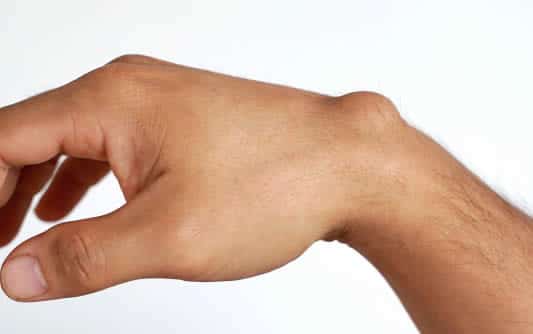
What is a cyst?
A skin cyst is a lump that is filled with fluid and appears just beneath the skin. They are quite common, and harmless most of the time.
- Be yellow or white in colour
- Have a dark plug that can be squeezed to release pus
- Vary in size but grow up to a few centimetres wide
Typically, cysts aren’t painful, but they can become sore if they get infected.
The cause of a skin cyst can be attributed to a protein called keratin that is produced by the skin. Normally, keratin cells move up to the surface of the skin when they die so that they can be shed. However, sometimes they can move deeper into the skin and multiply, forming a sac under the skin.
Anybody can develop cysts, but you are more likely to develop them if you have been through puberty, struggle with acne, or have damaged hair follicles. It is worth noting that skin cysts are not contagious.
Can skin cysts go away on their own?
Unless a cyst is infected, it should disappear on its own. If it keeps growing or becomes sore and red, then an infection may have developed.
Most cysts are harmless and don’t need medical attention, but they can become infected if you try to burst them and allow bacteria to get into the wound. You can also spread the infection this way too, so if you think the cyst is infected, speak to a doctor or dermatologist.
What is a lesion?
Skin lesions can be caused by injury or damage to the skin, and they will often cause the skin to look different in that particular area. They can occur anywhere on the body.
- Flat marks that are a different colour to your skin tone
- Raised bumps
- Blisters filled with fluid
- Raised bumps filled with pus or white fluid
Acne, birthmarks, and sunburn may be classified as skin lesions.
There are many reasons why you may develop a skin lesion. The causes of skin lesions can include:
- Sunburn
- Allergic reactions (to allergens such as insect bites)
- Injuries or wounds
- Bacterial infections like herpes
- Viral infections such as HIV
- Underlying medical conditions such as cancer or autoimmune diseases
Sometimes, a skin lesion can itch, swell and cause you pain, but that doesn’t always mean that it is infected. If you notice that the lesion is getting bigger, causing severe pain, leaking blood or pus and refusing to heal, then you must seek medical attention so that it can be treated.
Are skin lesions contagious?
It will depend on the cause of your skin lesion as to whether or not it is contagious. Viruses and bacteria can be spread to other people and cause the same skin lesion. For example, impetigo is a contagious skin condition that can cause skin lesions so it will impact others who come into contact with your lesion.
Treatment for skin lesions will depend entirely on their cause. Usually, a topical lotion or oral medication will be prescribed or recommended to help heal them. In some cases, they may need further investigation to see if an underlying cause needs to be treated first. If the lesions are identified as cancerous, surgery and other medication may be needed.
The best way to know for sure what type of treatment your skin lesion needs is to visit a doctor.
What is a lipoma?
Skin lipomas are fatty, soft lumps that develop under the skin and rarely need treatment. They are usually painless. Key features of skin lipomas include:
- Soft and ‘doughy’ to touch
- Range in size — can be as small as a pea or grow to a few centimetres wide
- Move slightly when pressed
- No pain
- Slow growth
- No colour — they are the same colour as your skin tone
Skin lipomas are caused by an overgrowth of fat cells in the body. People with a family history of lipomas have a higher risk of developing them.
Skin lipomas can grow on any part of the body, but they are more commonly seen on the neck, shoulders, arms, and thighs.
Can lipomas be cancerous?
Lipomas are not cancerous — a cancerous tumour of fat cells is called liposarcoma. It is also rare for a lipoma to develop into a liposarcoma. However, you must speak with a doctor if you notice any changes to your lipomas.
Most of the time, lipomas do not require treatment. But if it is bothering you, then a dermatologist may be able to help treat it using steroid injections to shrink it.
Alternatively, surgery can be used to remove the growth from under the skin.
What are skin tags?
Skin tags are small, skin-colored growths that appear most commonly on the neck, in the armpits, around the groin, under the breasts, and on the eyelids. They can grow up to 5cm wide and can sometimes vary slightly in color.
Skin tags hang off the skin and can be slightly raised, giving them a wart-like appearance — however, they are not contagious.
Skin tags are made of loose collagen fibers and blood vessels surrounded by skin. Causes can include:
- Hormonal changes in pregnancy
- Ageing
- Type 2 diabetes
- Chafing due to skin folds
Skin tags are often harmless and don’t need treatment unless they are impacting you on a daily basis. For example, they may affect your self-confidence or catch regularly onto clothing or jewelry.
What are skin tags a sign of?
Some people may worry that skin tags are a sign of skin cancer.
However, skin tags are not cancerous themselves, but they can be confused with cancerous growths on the skin. Skin tags do not usually change in color or size, so if you notice these changes, you should seek advice from a dermatologist.
The main differences between cysts, lesions, lipomas and skin tags
There are quite a few differences between cysts, lesions, lipomas, and skin tags.
For example, cysts and lipomas develop beneath the surface of the skin, but a skin tag is visible on top of the skin. Cysts can leak pus when squeezed, however, skin tags, lipomas, and lesions do not. If you notice that any skin tags, lipoma or lesions do start to leak pus, you will need to seek medical advice.
Another distinction is the cause of the skin condition. For instance, lesions can be caused by injuries, but cysts, lipomas, and skin tags can be the result of something happening inside the body, like a build-up of fatty cells.
Skin lesions can also, potentially, be contagious but cysts, lipomas, and skin tags are not contagious at all.
When to see a dermatologist
If you’re concerned that your skin growth isn’t getting better, no matter what kind it is, then it’s important that you see a doctor.
It is also vital that you look out for signs of infection. These can include pus leaking out of the site, fever, chills, and vomiting. Pay attention to the size and color of your skin growth as well — if it changes, then it needs to be checked by an expert.
Knowing the difference between any skin growths that you have can help you know whether you need to seek medical treatment or not.

Have you ever noticed a few tiny-sized bumps, either white or yellow, around your nose area, cheeks, or the skin surrounding your eyelids? Milia is the medical term for those pesky bumps, which are small cysts forming under the skin. They occur when little dead skin flakes or the protein keratin get stuck underneath the skin and grow to a size of one to two millimeters. Usually, newborns are more vulnerable to having milia, although anyone of any age, gender, or ethnicity can get them.
If you are concerned about milia, this comprehensive guide is just for you. Read on to understand all aspects of the skin condition. Let’s delve deeper into it and understand the causes, types, prevention, and treatment techniques associated with milia.
What Causes Milia?
Milia is caused by dead skin cells that become trapped beneath the layer of your skin and form cysts. Your body will inevitably lose dead skin cells to make way for fresh cells to proliferate and replace the ones lost. This process is called exfoliation.
When dead skin cells do not shed naturally from the body, new skin cells develop on top of them and trap the dead cells underneath as they do so. Your dead skin cells begin to stiffen and form cysts around your nose, cheeks, trunk, limbs, and chest area.
Milia could also emerge due to other factors, including:
- An injury or prolonged exposure to the sun, causing skin damage
- Consumption of steroid creams or ointments for an extended period
- A symptom of a hereditary disease or deficiency
- An autoimmune response
- Not practicing an appropriate skincare routine
- Using makeup or cosmetics that block your pores
- Not getting enough sleep
- You suffer from a skin ailment such as eczema, rosacea, or dandruff
Types of Milias
Here are the most prominent types of milia recognized in medical settings.
Neonatal Milia
It’s estimated that up to half of all newborns can have milia. They typically vanish on their own after a few weeks. The nose is the most common location for neonatal milia, but it can also show up on the scalp, cheek, upper trunk, and inside the mouth.
Remember that neonatal milia and neonatal acne are two distinct conditions. Milia is often of a consistent size and does not have any redness, in contrast to the white bumps of neonatal acne, which can fluctuate in size and are frequently accompanied by redness.
Milia may already be apparent from birth, although neonatal acne typically does not show up until around two weeks following birth.
Primary Milia
The forehead, eyelids, genitals, and cheeks are typical locations for primary milia to appear. Primary milia can affect people of any age, including children and adults. They might go away on their own after a few weeks, but they might also stick around for a few months if no treatment is provided. Also, they can show up at the nasal crease in young toddlers.
Milia en Plaque
This condition results in many milia being found clustered around a broader, flatter region that is elevated above the skin that surrounds it. Such skin patches or plaques typically have distinct borders that can be precisely defined. Milia en plaque can infect people of all ages. However, it is most common in middle-aged women. The typical spots for its appearance are on the eyelids, face or jaw, and behind the ears.
This issue is pretty rare and is mainly linked to a variety of other skin conditions, such as:
- Pseudoxanthoma Elasticum
- Lichen Planus
- Discoid Lupus Erythematosus
- Multiple Eruptive Milia
It is also a rare form of milia, characterized by the gradual appearance of many bumps in the same region over a few weeks or months. In many cases, this is the sole symptom. However, the affected region could also feel a bit irritated or itchy. Such milia are most likely to develop on the upper arms, upper trunk, and face.
Traumatic Milia
This condition, which follows an injury to the skin, is also known as secondary milia, and it may involve the following:
- Skin resurfacing methods, such as laser resurfacing, dermabrasion, etc.
- Prolonged exposure to sunlight
- Blistering that occurs as a result of an allergic reaction or skin condition
How Can You Prevent Milia?
Although there is no foolproof way to avoid getting it, milia and other skin conditions can be avoided by taking appropriate care of your skin as an adult.
Use Moisturizers and Sunscreens
Always protect your skin from the sun and keep it moisturized. Milia is a condition that frequently results from overexposure to the sun. Your skin will eventually grow leathery, making it more problematic for the dead cells to shed off.
Regularly applying sunscreen and moisturizer will make your skin radiant and flexible, letting it repair and replenish itself as it should. Always remember to use sunscreen—even when it’s cold outside—especially if you spend a lot of time indoors near a window.
Steer Clear of Heavy Ointments and Creams
These can cause your skin to become irritated and block your pores, preventing your body’s natural exfoliation process.
Make Sure Your Face Is Neat and Clean
Your skin pores will become clogged due to the accumulation of dirt and sweat. Acne and other skin issues may develop as a result of this. Cleaning your face of the dirt and oil that accumulates throughout the day will help your skin to exfoliate naturally. Keeping your face cleaner and fresh will assist your skin in shedding the dead cells that accumulate there.
Educate Your Child
If both you and your children have a history of milia eruptions, make sure your kids understand the significance of taking care of their skin. Good habits are best inculcated by young. When your kids are old enough to understand, show them how to shield themselves from the sun rays, including how to apply sunscreen, how to use caps and other protective clothes.
How Can You Get Rid of Milia?
As a purely cosmetic problem, milia are nothing to be overly concerned about; they don’t cause scarring, don’t typically result in further issues, and often disappear on their own with time. However, many people who develop milia on their faces aren’t quite happy with them and can benefit from treatment.
Treating Milia at Home
Although a plethora of home remedies are available for milia, there’s no better alternative to seeking professional help. Although no treatment guarantees to eliminate milia immediately every time, these procedures generally have a low risk of side effects.
For example, cinnamon, honey, and rose extracts have all been shown to have antibacterial characteristics. These properties may make them helpful in treating a variety of skin conditions. However, there is little research on the efficacy of these treatments for milia.
Here are some good practices to help prevent and manage milia.
- Clean the target spot daily. Use a mild soap to avoid irritating your skin while cleaning. Ideally, you should prefer to buy soaps developed for people with sensitive skin.
- Open up your skin pores with steam. Taking a steamy shower while bathing is a great way to open up the pores.
- Periodic exfoliation is key. Exfoliation of the affected area is highly recommended. However, you should avoid exfoliating too frequently, as doing so daily can aggravate skin irritation.
- Use topical retinoids. These are derived from Vitamin A and come in the form of creams or gels in the market. While topical retinoids are intended for the treatment of acne and other skin conditions, they might also serve you well in the case of milia.
- Use sunscreen. As discussed, sunscreen is a preventive measure and a treatment. Try using sunscreen with an SPF of 50+ to achieve the best protection and results.
One thing to remember is that you should prevent yourself from scratching or plucking milia at all costs. Interfering with the healing process in this way raises the possibility of infection and may result in long-term scarring.
Professional Treatment Options for Milia
Several effective clinical treatments have been developed to try to get rid of milia. Some of these are:
- Curettage: The dermatologist will numb the region, eradicate the milia by ‘scooping’ it up, and then use a hot wire to seal the skin.
- De-roofing: The milia are removed by a specialist using a sterile needle or blade.
- Cryotherapy: Liquid nitrogen is employed in this process to remove the milia. Possible side effects include blistering and swelling, which should clear up in a few days.
- Minocycline: This oral antibiotic is effective against milia en plaque and other types of milia.
Except for minocycline, which is a medication, all these procedures can potentially cause scarring although they only last for a short span of time. Long-term scarring or other serious side effects are very rare.
Having milia isn’t necessarily harmful to your health, but you’re certainly not alone if you’re concerned about them appearing on your skin. The experts at Pine Belt Dermatology are here for you. Ask us about any concerns you may have or learn more about this issue. Get in touch with our dermatologist for more information.
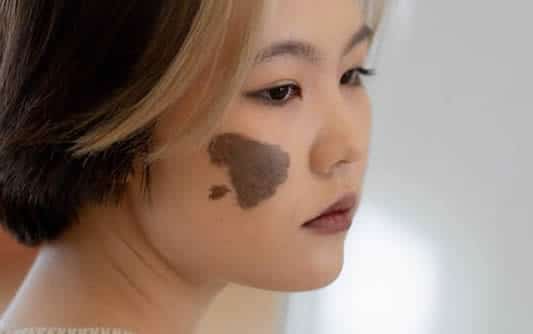
Let’s look at some of the common questions about birthmarks and debunk some myths associated with them.
Birthmarks are something so common that we often don’t give them a second thought. We consider them as vital identification marks, unique to every individual.
Science is still not sure about what causes birthmarks to appear and what purpose do they serve. But there are a number of myths surrounding the cause, nature, and purpose of birthmarks.
What is a Birthmark?
A birthmark is a colored mark or a blemish under the skin which usually appears at the time of birth. While some birthmarks might fade with age, others might stay and get bigger and darker.
Birthmarks are usually harmless until they start growing abnormally. It might feel like millions of cells growing over an area and rupturing the skin. Such abnormalities not only hamper one’s physical appearance but if neglected, can lead to huge tumors which might turn malignant.
These lumps and irregular growths leave dark patches on the skin. Such lumps form a type of malformation.
What is a Malformation?
A malformation is a soft, lumpy, blue mark on the skin caused by abnormal veins. It starts when the blood vessel’s muscle layer slows down blood flow, leading to clot formation.
These anomalies are also known as birthmarks, birth defects, congenital disorders, or congenital malformations.
Vascular malformations can occur in any part of the body, most common being the legs, arms, and faces.
Common Myths Associated with Birthmarks
- Birthmarks Are a Sign of Maternal Impression: This myth suggests that if a woman experiences a strong emotion during her pregnancy and touches a specific part of her body, then the baby is born with a birthmark on that part of the body. This is an absolute myth and there’s no scientific evidence to prove it.
- Birthmarks Signify Prosperity: It is a myth that birthmarks can predict future prosperity or underline some special personality traits of the newborn. They are merely colored marks under the skin with no link to a person’s personality or prosperity.
- Birthmarks Are Caused By Solar Eclipse: This is one of the most common myths that pregnant women who witness the eclipse might end up causing their babies to have some form of deformity or birthmarks. Another myth is that birthmarks are caused due to any condition or disease in either of the parents because of something they might have eaten. None of these so-called facts have any basis in science.
NOT a Myth: Birthmarks can enlarge
Yes, birthmarks can enlarge and start growing abnormally. When a birthmark is too close to the skin, there are high chances of injury which might cause the blood vessels to rupture and cause torrential bleeding. They can also clot up and cause extreme pain. It is advisable to seek immediate medical help in such cases.
When To See a Dermatologist?
A simple test to know whether your birthmark is a cause for worry or not is to close your eyes and feel your birthmark. If you can feel any type of lump or irregularity, then you must get an MRI scan done to know how deep or superficial your birthmark is. Based on the test results, your dermatologist can suggest further treatment.
Birthmarks usually grow proportionately with the growth of the body. So a smaller birthmark as a child might grow in size as you grow up. But when the growth is abnormal or disproportionate, you must immediately consult a doctor and get it tested.
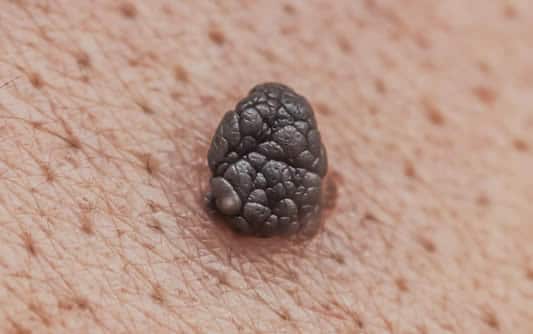
The phrase “skin lesion” covers a wide range of color changes, lumps and bumps, patches, rashes, and other things on or under the skin. Freckles, moles, areas of itchy, dry skin, and many other marks all qualify as skin lesions. Many are normal, but a few can be deadly.
1. Not all the brown spots on your skin are moles.
- Moles are collections of melanocytes—a type of pigment-producing cell. They can be flat or elevated, brown, black, or pink, and they often appear early in life. Moles generally stop appearing after age 40. Over time, they have the potential to develop into skin cancer.
- But not all dark spots on your skin are moles. They can also be harmless freckles or sun spots—which are flat spots that occur in sun-exposed areas due to UV exposure. Brown spots that occur after age 40 are often seborrheic keratosis, also known as wisdom or age spots. They are elevated brown bumps that can have a waxy or crusty texture. Though their appearance may be concerning, they are not made up of melanocytes, so they do not carry a risk of skin cancer.
2. Scar tissue can also appear as a brown spot or bump on the skin.
A dermatofibroma is a flat or slightly elevated bump with a white to purple scar tissue center surrounded by a brown rim. Dermatofibromas are benign.
3. Rashes are skin lesions, too. And the most common rash culprit may surprise you.
A rash is composed of skin lesions that may cover a small or large area of skin. Rashes can happen for lots of reasons, but one of the most common causes is a reaction to personal care products like creams, lotions, soaps, and shampoos. The fragrances and other substances in these products can often irritate the skin, Fiessinger said. Clothing-related products like detergents and fabric softeners also fall into this category. Even though these products are not applied directly to the skin, the chemicals contained in them can linger in the clothing that you wear.
If you think a personal care product may be causing a rash, Fiessinger recommends switching from your current product to a gentler, fragrance-free version. People can develop sensitivities to products at any time, even if you have been using the same product for years without experiencing any negative effects. In addition, companies are always changing ingredients and formulations of their products, so there may be a new substance in your go-to product that you’re reacting to.
If you switch products and the rash doesn’t go away, then it’s time to visit a dermatologist to determine the cause.
4. How often should you get a skin exam? It depends.
There aren’t one-size-fits-all guidelines for when people should follow up with a dermatologist. In general, it’s smart to go in for an appointment any time you see something on your skin that concerns you. At that initial appointment, the dermatologist will talk with you about your family history and assess your skin cancer risk. This will help your doctor determine when you should come back for your next screening appointment. There’s no substitute for a dermatologist’s trained eye, and catching problems early can make all the difference.

Excessive sweating is common and can affect the whole body or certain areas. Sometimes it gets better with age but there are things you can do and treatments that can help.
It’s normal to sweat if you get hot or do exercise. But you may be sweating excessively if you’re sweating when your body does not need to cool down.
Excessive sweating can happen for no clear reason. It could be because of another condition you may have or as a side effect of a medicine you’re taking. It can happen during the menopause. This type of sweating is known as a hot flush.
Things you can do to help with excessive sweating
Do
- Wear loose-fitting clothes to minimize signs of sweating
- Wear socks that absorb moisture and change your socks at least twice a day if possible
- Wear leather shoes and try to wear different shoes day to day
Don’t
- Do not wear tight clothes or synthetic fabrics – for example, nylon
- Do not wear enclosed boots or sports shoes that may cause your feet to sweat more
- Do not do things that might make your sweating worse – for example, drinking alcohol or eating spicy food
Treating severe excessive sweating
You may be referred to a skin specialist (dermatologist) if there’s no clear cause and nothing seems to be helping. They may recommend other treatments that you can try, such as:
- Taking tablets that reduce sweating
- Treating the areas with a weak electric current passed through water or on a wet pad (iontophoresis)
- Having Botox injections for sweating under the armpits
- Surgery – for example, removal of the sweat glands
If your sweating is caused by another condition, any treatment you may need will depend on what’s causing it.
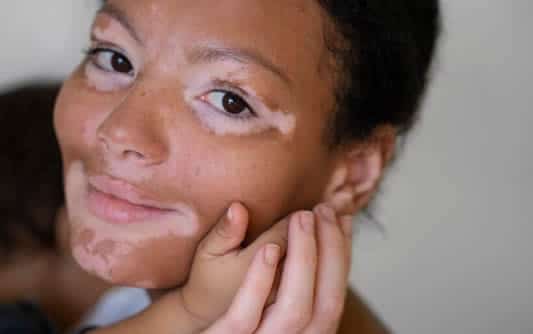
Vitiligo affects between 0.5% to 2% of people globally. Even though it’s a rare condition, you’ve heard of it or seen it if you’re familiar with the pop music legend Michael Jackson, whose skin was notoriously discolored. But what is it exactly, and how can you be sure if you have it?
What is vitiligo?
Vitiligo is a disease that causes the loss of skin pigmentation, resulting in white blotches on the skin. Unfortunately, we don’t know the exact causes of vitiligo. What researchers suspect is that vitiligo is an autoimmune response that is triggered by environmental factors.
Who Gets Vitiligo?
No one group of people is more susceptible to vitiligo — anyone can develop it, and men and women are affected equally. However, it’s more obvious with people who have darker skin tones. Vitiligo can develop at any age. However, most people develop the disease before age 40 and about half are diagnosed before they turn 21. Vitiligo is not contagious.
Types of Vitiligo
Recent consensus is that there are two types of vitiligo:
- Non-segmental vitiligo (NSV): The more common form of vitiligo, NSV, can manifest in multiple parts of the body and usually displays some symmetry in the location of the patches.
- Segmental: This form of vitiligo tends to affect a specific body part or limb.
Signs of Vitiligo
Because skin irregularities are quite common and can range in size, shape, color, and degree of severity, here are five signs that you may have vitiligo, which isn’t life-threatening:
- You have patches of paler or white skin: The telltale sign of vitiligo is well-defined patches of white skin. The patches are caused when pigment-producing cells die or stop producing melanin, which is the pigment that gives you your skin tone.
- Your eye color changes: Your eye color comes from pigmented cells in the iris and retina, which can be affected if you have vitiligo.
- Your hair turns white: Your hair, eyebrows, eyelashes, or facial hair turns grey or white unexpectedly along with parts of your skin.
- Insides of your mouth develop white patches: Your mucous membrane is also susceptible to vitiligo, and this might appear as loss of pigmentation within your mouth and nose.
- You have another disease: In a 10-year study, nearly 20% of vitiligo patients had at least one other autoimmune disease. Vitiligo is also linked to thyroid disease and alopecia areata (sudden hair loss). Thyroid disease was 15 times more common in these patients than in the general U.S. population, while alopecia areata was 31 times more common.
Treatment for Vitiligo
While there is no cure for vitiligo, some treatments are available to stop or slow the discoloring process and return some color to your skin (depending on your natural skin tone). Most common treatments include:
- Topical immune suppressing medication
- Phototherapy
- Cosmetic make-up
While not preventative or restorative, depigmentation is an option for extreme cases of vitiligo and aims to depigment all of your skin to achieve even color.
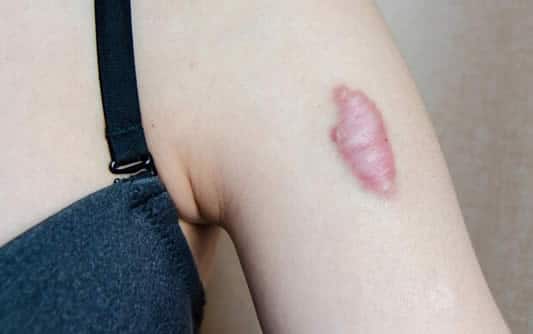
Anything that causes skin to scar can cause a keloid.
- Body piercing (especially ear piercing)
- Bout with acne or chickenpox (usually developing on the face, chest, or back)
- Burn
- Cut, scrape, or bug bite
- Deep wound like a puncture wound
- Skin disease that causes inflammation like folliculitis
- Tattoo
- Wound caused by surgery, a procedure, or an injection
- Some people get a keloid when they shave their beard area.
- It’s also possible for a keloid to appear on uninjured skin. This keloid is called a “spontaneous keloid.”
Spontaneous keloids are rare, so there are only a few known cases. Findings from studies suggest that these keloids may occur when:
- The skin injury is so minor that the person doesn’t notice it.
- A disease causes intense inflammation inside the body.
- Certain medication is taken.
Exactly what happens inside the body to cause keloids isn’t fully understood. Researchers know that the body produces more collagen than it needs to heal the injured skin. That’s why the keloid scar grows bigger than the wound that caused it.
To understand all that happens inside the body, dermatologists continue to study keloids.
Does melanin cause keloids?
Melanin is the pigment that gives our skin, hair, and eyes their color. The more melanin your body produces, the darker your skin, hair, and eyes.
Researchers have been studying what role, if any, melanin plays in causing keloids because:
- Black people have more melanin than other races, and they are more likely to develop keloids than white people.
- When we injure our skin, the body produces cells that make pigment (melanocytes). This means there’s more melanin in the injured area.
- Keloids are more likely to develop on areas of the body that have more melanocytes (cells that make pigment). For example, a keloid is more likely to form on the chest than the palm of the hand.
These facts certainly suggest that melanin might play a role in causing keloids.
Some people are more likely to get keloids
In the United States, Black people between the ages of 10 and 30 have the greatest risk of developing a keloid.
Researchers continue to study keloids to find out what causes them. Knowing exactly what causes this type of scar could lead to better treatment and more effective ways to prevent keloids.
What increases the risk of developing keloids?
While studying what causes keloids, dermatologists learned that certain people seem more likely to develop these scars. Here’s what seems to increase the risk:
- African, Asian, or Latin-American descent: In the United States, keloids are more common in Black and Latin Americans than people with lighter skin tones. Whereas, in Asia, ethnic Chinese have the highest risk of developing keloids.
- Family history of keloids: About one-third of people who get keloids have a first-degree blood relative (mother, father, sister, brother, or child) who gets keloids. This is most common in people of African or Asian descent.
- Age (10 and 30 years old): This is the peak time to develop keloids. Most people begin seeing keloids in their 20s. However, a keloid can develop at any time. Infants get keloids. People 70 years of age or older develop keloids.
- Pregnancy: The hormonal changes that occur during pregnancy increase the risk of developing a keloid.
If you have keloids, contact our office to schedule a consultation to learn about your options.
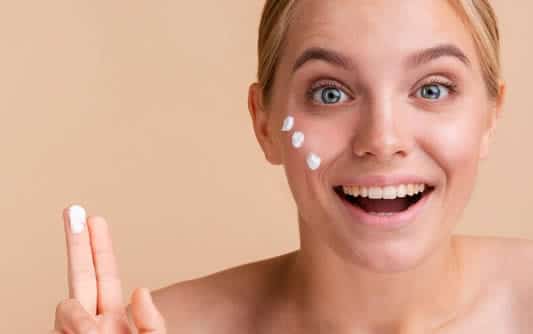
Brown spots, though not inherently harmful, often prompt us to seek treatment for cosmetic reasons, driven by a desire to improve our appearance and boost self-esteem. While preventing hyperpigmentation is a less challenging and more cost-effective endeavor, treating existing spots can be a nuanced journey. In this pursuit, various methods, from over-the-counter creams to professional procedures, are available. However, navigating the safety and efficacy of these options is crucial for achieving desired outcomes without compromising skin health.
Brown spots are not dangerous. The only reason to have them treated is cosmetic – because we feel it will improve our appearance, make us look younger and ultimately enhance our self-esteem. Treating existing hyperpigmentation is harder than preventing it and is much more expensive.
Lightening creams:
These are easily accessible but are they safe? There are over-the-counter skin-lightening creams such as kojic acid serums, vitamin C serums, lactic, azelaic and glycolic acid preparations, which are relatively safe. There are also over-the-counter and prescription strength hydroquinone creams, which are rather controversial because they increase the risk for developing a skin condition called ochronosis. This is a blue-gray pigmentation caused by the long-term use of hydroquinone. It may or may not go away after stopping the use of hydroquinone. My advice is to be super cautious with this one if you do not want more problems.
Retinoids or Vitamin A derivatives:
These are also helpful in the fight for younger and lighter skin. They stimulate the production of collagen and exfoliate the skin gently by speeding up the cell turnover. They may cause irritation to the skin so start using your retinoid slowly – 2-3 times a week at first, then increase frequency of use gradually, moisturize and use excellent sun protection. An over-the-counter Vitamin A derivative called Differin (adapalene) gel used to require a prescription. I recommend that you start by using this product first before moving on to something stronger and more irritating like Tazorac, which does require a prescription.
Cryotherapy:
Your dermatologist or medical provider can perform this procedure in the office but it is not usually covered by insurance because it is considered cosmetic. It also has the potential to leave you with permanent white spots or even more hyperpigmentation.
Laser treatment:
Many options are also available in dermatology facilities or Medical Spas in the community. However, it is important to find the right provider to perform those treatments on you in order to avoid scarring or more complications. The laser technician also needs to be familiar with settings for your skin color, especially if you are a dark-skinned individual or otherwise you are risking permanent skin discoloration.
Chemical peels and Intense pulse light (IPL) treatments:
These can lighten the skin as well. IPL is a pulsed light device that distributes a broad wavelength of energy that is absorbed by the pigment of the brown spot and destroys it. TCL and glycolic acid chemical peels are also very effective with fighting sun spots by exfoliating the skin and getting rid of the top layer of damaged skin.
In the quest for lighter and younger-looking skin, the array of treatments, from accessible lightening creams to advanced laser procedures, offers diverse options. Yet, the path to skin rejuvenation requires careful consideration. Safety concerns surround certain over-the-counter and prescription creams, emphasizing the importance of informed choices. Whether opting for retinoids, cryotherapy, laser treatments, or chemical peels, selecting a skilled dermatologist is paramount to avoid potential complications.

The Importance of Regular Skin Cancer Screenings
If you prioritize routine medical checkups for your general health, teeth, or eyes, your skin deserves the same attention. Skin cancer is the most common type of cancer in the United States, but when detected early, it is highly treatable. Make annual skin cancer screenings a part of your healthcare routine by scheduling an appointment with a trusted dermatologist like Dr. Bernard Raskin in Bakersfield.
Why Skin Cancer Screenings Are Essential
The purpose of a skin cancer screening is to thoroughly examine your entire body for any abnormalities. A dermatologist will carefully inspect your skin from head to toe, looking for new growths, changes in moles, rashes, or other unusual signs.
There are three main types of skin cancer:
- Basal Cell Carcinoma
- Squamous Cell Carcinoma
- Melanoma
Each type has distinct signs and symptoms, and an experienced dermatologist like Dr. Raskin can accurately identify them and recommend the best treatment options.
How Often Should You Get Screened?
Annual skin cancer checks are recommended for everyone, but they are particularly important for individuals with:
- A personal or family history of skin cancer
- A large number of moles or a history of atypical moles
- Skin growths or suspicious lesions
- Frequent sun exposure or a history of sunburns
- Past use of tanning beds
- Organ transplant recipients
What to Expect During a Screening
Before your appointment, it’s helpful to conduct a self-examination to note any areas of concern. A typical skin cancer screening takes about 20 minutes and involves:
- A full-body visual inspection by the dermatologist.
- Use of specialized tools, such as a bright light or dermatoscope, to magnify and closely examine skin lesions.
What Happens After the Screening?
- If a Concern Is Found:
- The dermatologist may take photographs for monitoring or perform a biopsy to analyze a tissue sample under a microscope.
- If necessary, you’ll be contacted with further recommendations or next steps.
- If No Issues Are Detected:
- You can feel confident knowing your skin is healthy and schedule your next screening for the following year.
Take Action for Your Skin’s Health
Protect your health by making regular skin cancer screenings part of your preventive care routine. Schedule your appointment today at any of our three locations to ensure peace of mind and early detection.










